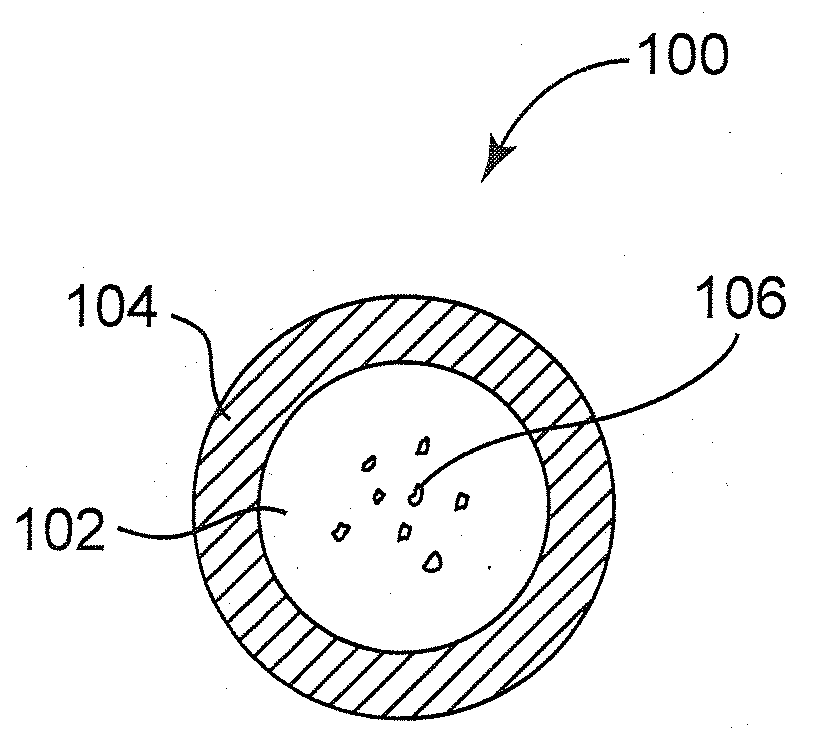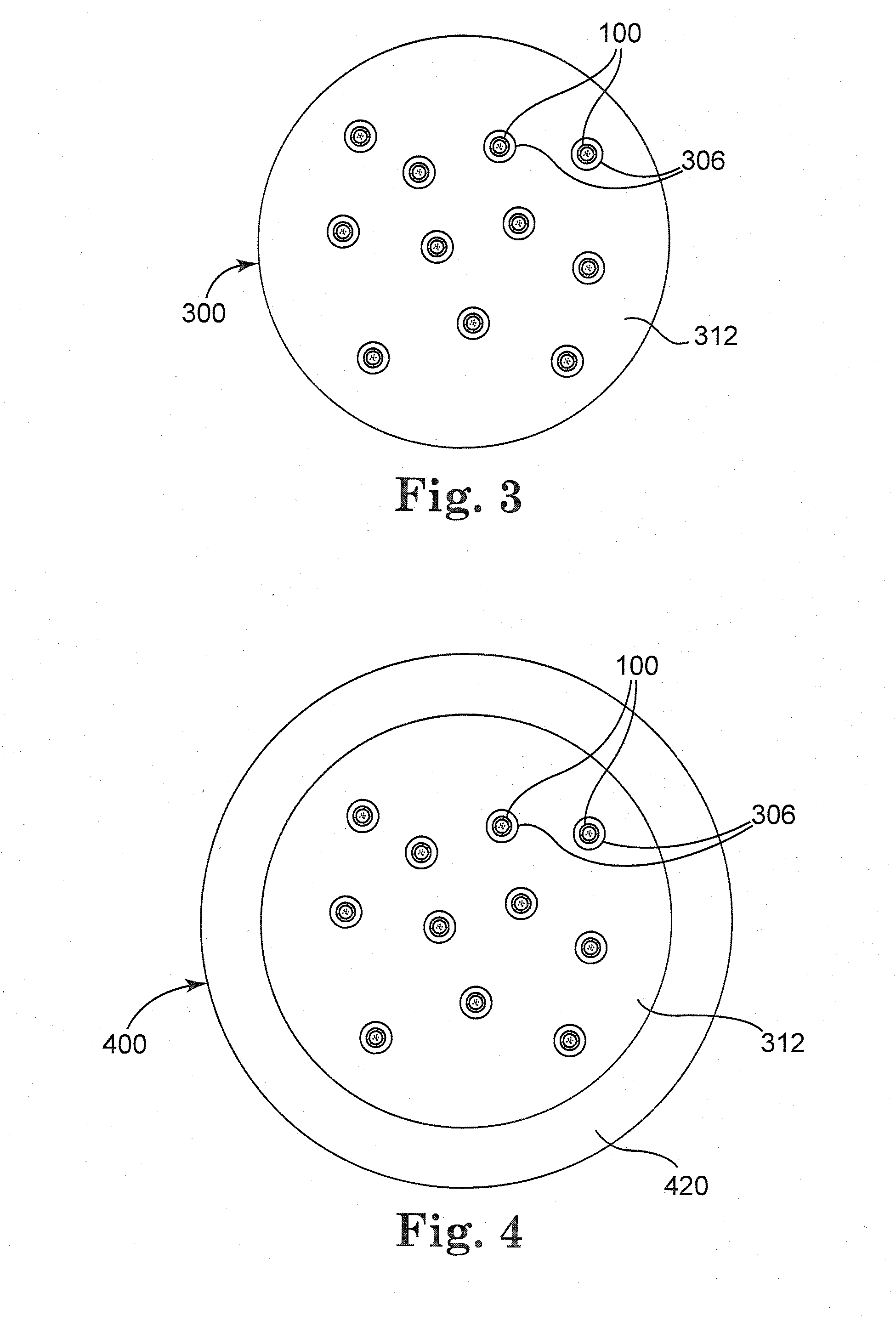Encapsulation of oxidatively unstable compounds
a technology of unstable compounds and oxidative stability, applied in the field of encapsulation of materials, to achieve the effect of effectively dry powder form and enhanced oxidative stability
- Summary
- Abstract
- Description
- Claims
- Application Information
AI Technical Summary
Benefits of technology
Problems solved by technology
Method used
Image
Examples
example 1
[0057]A starch solution was prepared by blending together 600 g of M200 maltodextrin, 120 g of CAPSUL modified starch, 2.7 g of ascorbic acid and 80 g of sucrose and then adding the resulting blended powder mixture to 1,200 g of 80° C. DI water. The solution was agitated as the temperature was increased to 85° C., then cooled in an ice bath before refrigerating overnight. The following day 26.7 g of ULTRALEC F™ lecithin (from Archer Daniels Midland Co.) was added to 530.7 g of omega-3 oil (from Hormel Foods Corp.) containing 2,000 ppm tocopherol. The oil phase was heated to approximately 80° C. and allowed to cool, then emulsified into the starch solution using a SILVERS ON L2R high shear mixer operated at maximum speed for 20 minutes followed by a single pass through a MICROFLUIDICS™ M110Y microfluidizer (from MFIC Corp.) operated at 103 MPa. The resulting emulsion was spray dried using a NIRO Mobile Minor lab dryer operated using an inlet temperature of 225° C. and an outlet tempe...
example 2
[0058]An encapsulated product was prepared using the method of Example 1 but employing a starch solution containing 600 g of M200 maltodextrin, 120 g of CAPSUL modified starch, 4.0 g of ascorbic acid, 80 g of sucrose and 1,200 g of DI water, and an oil phase made from 40.0 g of lecithin and 796 g of omega-3 oil containing 2,000 ppm tocopherol. The total yield of product collected in bottles from the cyclone was 784 g. An additional 508 g of product was scraped from the dryer. The product had an SPME value of 10,355 after 48 hours at 50° C. (see Table 3), thus demonstrating improved oxidative stability over the Comparative Examples.
example 3
[0059]An encapsulated product was prepared using the method of Example 1 but employing a starch solution containing 600 g of M200 maltodextrin, 120 g of CAPSUL modified starch, 6.0 g of ascorbic acid, 80 g of sucrose and 2,400 g of DI water, and an oil phase made from 60.0 g of lecithin and 1,194 g of omega-3 oil containing 2,000 ppm tocopherol. The total yield of product collected in bottles from the cyclone was 866 g. An additional 491 g of product was scraped from the dryer. The product had an SPME value of 15,744 after 48 hours at 50° C. (see Table 3), thus demonstrating improved oxidative stability over the Comparative Examples.
PUM
| Property | Measurement | Unit |
|---|---|---|
| Temperature | aaaaa | aaaaa |
| Time | aaaaa | aaaaa |
| Temperature | aaaaa | aaaaa |
Abstract
Description
Claims
Application Information
 Login to View More
Login to View More - R&D
- Intellectual Property
- Life Sciences
- Materials
- Tech Scout
- Unparalleled Data Quality
- Higher Quality Content
- 60% Fewer Hallucinations
Browse by: Latest US Patents, China's latest patents, Technical Efficacy Thesaurus, Application Domain, Technology Topic, Popular Technical Reports.
© 2025 PatSnap. All rights reserved.Legal|Privacy policy|Modern Slavery Act Transparency Statement|Sitemap|About US| Contact US: help@patsnap.com



